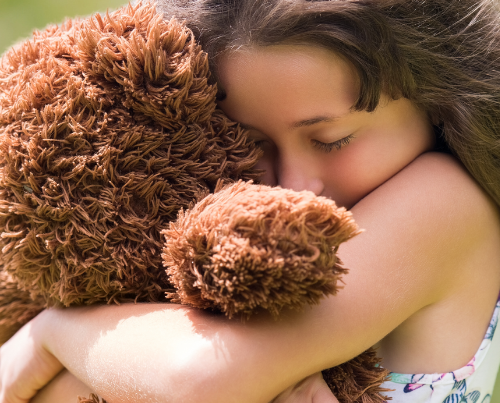DV and Children
The Problem
We know much about woman abuse. We know much about child abuse. But if we are to seriously address either one, we must recognize the links between these two forms of domestic violence.
While one form of abuse can certainly occur without the other, the tragic reality is that anytime a mother is abused by her husband/partner, her children are also affected in both overt and subtle ways:
When a mother is abused:
- Her children see it, hear it, and sense it.
- Her children feel confusion, stress, and fear.
- Her children may feel guilty that they can’t protect her, or that they are the cause of the strife. If she leaves, they may feel responsible for the family breakup.
- Her children (particularly sons) are more likely to grow up to repeat the destructive relationship patterns they saw in their early lives.
- Her children may also be physically abused or they may be neglected while the mother attempts to deal with her own trauma.
Studies Reveal
- Children of battered women show their distress in a range of physical and emotional problems.
- Children from violent homes get sick more often and generally have more health problems than children from non-violent homes; these include headaches, ulcers, abdominal complaints and bed-wetting. If the children themselves are abused, their problems are even greater.
- Psychological and emotional problems are more frequent in children of abused women. Preschoolers, particularly, show below-average selfconcept and less empathy for others. School-age boys are likely to be more aggressive and show more behavioral problems than both girls of battered mothers and children from nonviolent homes. Depression, anxiety, fear, eating and sleep disorders, regressive behaviors and guilt are common in children of battered women.
- Anytime a mother is abused her children are also affected in both overt and subtle ways.
- Children of abused women are at high risk of being abused themselves.
- The rate of child abuse is from six to fifteen times higher in families where the mother is abused compared to families where the mother is not abused.
- Of women coming to shelters, more than half report that their children are also physically, emotionally and sometimes sexually abused; the children’s abuser is two to three times more likely to be the woman’s abuser rather than the battered woman herself.
- Wife abuse is the single strongest identifiable risk factor for child abuse.
- Many battered women report that their abusers threaten or attack the children as a way to control and hurt them even more.
- Almost 82% of those boys witnessing spouse abuse were also abused themselves, thus confirming a strong relationship between spouse abuse and child abuse.
- Studies of abused children in the general population reveal that nearly half have mothers who are also abused, making wife abuse the single strongest identifiable risk factor for child abuse.
- Children (particularly boys) of battered women are at great risk of repeating the patterns they saw as children when they become adults.
- While “common wisdom” holds that abused women are just repeating the victimization they saw their mothers suffer, comparative studies show that battered women are actually only slightly more likely than not-battered women to have come from homes where they or their mothers were abused.
- In contrast, abusers are six times more likely to have seen their fathers beating their mothers than nonabusers.
- Our culture already encourages boys to act aggressively, to show and take power physically, to see girls as weak and easy prey; the culture encourages girls to act submissively, and to accept the domination of a male as the norm. These values reinforce boys’ early experience of a violent home, increasing the likelihood that they will become abusers. Societal values encourage girls, no matter what their background of abuse, to accept how their husbands or boyfriends treat them, to expect that boys/men will use physical means to maintain control of their surroundings and the people in them.
What To Do?
When we suspect child abuse, we should also suspect woman abuse; when we see battered mothers, we must also reach out to their children. Because woman abuse is child abuse, the children of an abused woman are also in need of our careful loving attention. We must remember these interconnections as we attempt to eradicate family violence through services, education and public policy.
Our responses as service providers, teachers, community members, friends and family must be geared to protect these children from physical abuse, to help them recognize that they are not responsible for the violence in their homes, and to help them find ways to grow past their present trauma into healthy adults. We must help them avoid the vicious trap of learned patterns by teaching and modeling nonviolent methods of conflict resolution and by helping them express their feelings in healthy, respectful ways.
Those working to end domestic violence should be supported in their efforts to develop services that work with children of battered women as primary clients. The children’s needs for support and emotional and psychological attention should be recognized.
Families and friends can intervene when we see or suspect abuse of women or children. We can refuse to accept the deadly myth that we should mind our own business and keep out of private family matters. We must recognize that our silence helps reinforce the shame and pain battered women and children have so long felt, and encourages a new generation of batterers.
Social service and child protective agencies should be ever watchful for all victims of domestic violence. They should have information, and be able to provide services and referrals to aid a battered mother as well as her abused or neglected children.
What Schools Can Do
- Training in non-violent conflict resolution and positive emotion-handling skills can be incorporated into curricula at every level.
- Social studies classes can include information about domestic violence as a serious crime.
- Health classes can identify domestic violence as a public and personal health problem, as the U. S. Surgeon General has already done.
- Teachers can watch for the psychological signs of abuse in addition to the physical bruises: excessive passivity in girls, aggressiveness in boys, drug abuse, frequent illness, anxiety, inability to concentrate.
- Corporal punishment, which teaches the use of physical force as a means of maintaining control, should be strictly prohibited in schools.
Only by acknowledging the often silent pain of the children in a battered woman’s life, by reaching out to all the victims of domestic violence, can we achieve success in our efforts to bring home the dream of a peaceful family life for all women and children.






